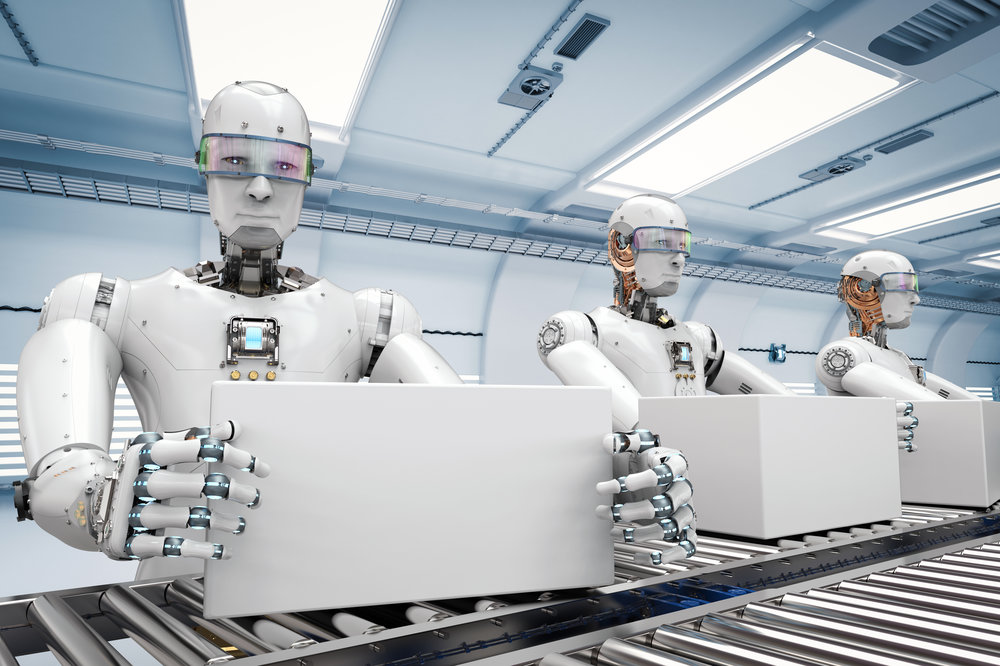Wasp Barcode Technologies: The Barcode Solution People
How To Build A Smarter Warehouse
 Unless you’ve been living under a rock, you know that the business world—specifically retail—has undergone a massive change over the last few years. The way we shop has been altered dramatically, and as a result the way companies produce, store, and ship their inventory has changed as well. With everything else in our lives undergoing a technological overhaul, it’s time to consider how our supply chain, warehouses, and inventory management can keep up.
Unless you’ve been living under a rock, you know that the business world—specifically retail—has undergone a massive change over the last few years. The way we shop has been altered dramatically, and as a result the way companies produce, store, and ship their inventory has changed as well. With everything else in our lives undergoing a technological overhaul, it’s time to consider how our supply chain, warehouses, and inventory management can keep up.
Companies like Amazon and Wal-Mart are moving in leaps and bounds to change the warehouse game to their advantage, investing billions in new technologies and methods. Small and medium-sized businesses don’t have the time or resources to invest in new, super-efficient smart warehouses that can take five to ten years to build out. How do we build smarter warehouses now?
There are a number of steps businesses can take to outfit their warehouses with smarter tools, and these changes can make both small and big differences, depending on the goal. Let’s take a look at some methods:
The Rise Of Robots and “Co-Bots”
It wouldn’t be a conversation about the future if we didn’t touch on robots. Industrial robotics are making a major impact on a number of facilities, in a number of industries, throughout the country and the world. Automation in the warehouse is one of the biggest supply chain trends of the year.
[Tweet "It wouldn’t be a conversation about the future if we didn’t touch on robots."]
While machines have long been used in production and assembly, we’re seeing an increase in robots used for more complex practices like picking and packing. We can expect to see their roles increase as programs and AI improve in their complexity and understanding.
 While this idea is worrisome to some who see automated machines as the death of the factory worker, warehouse machines like drones are more commonly being placed alongside factory workers, in a “co-bot” role, to help increase efficiency, rather than to replace humans. These machines are better at completing full cycle counts than their human counterparts, and can help companies do “continuous inventory” rather than stopping for the night.
As a result, some industries are seeing sizeable upticks in production. For example, vehicle production in the U.S. is up 16 percent since 2010 thanks to the help of co-bots, according to one report. Co-bot investment is said to be poised for a jump to the $3 billion mark by 2020 (up from $116 million in 2015).
As robots take on the more menial roles and complete inventory and asset counts without risk of input error issues, humans will be freed up to take on new roles, including machine oversight and customer service. (Though, speaking of which, another area where robots are making inroads is as “chatbots” that can help customers with delivery or service issues any hour of the day. We’re still a ways off from chatbots being completely autonomous, however.)
While this idea is worrisome to some who see automated machines as the death of the factory worker, warehouse machines like drones are more commonly being placed alongside factory workers, in a “co-bot” role, to help increase efficiency, rather than to replace humans. These machines are better at completing full cycle counts than their human counterparts, and can help companies do “continuous inventory” rather than stopping for the night.
As a result, some industries are seeing sizeable upticks in production. For example, vehicle production in the U.S. is up 16 percent since 2010 thanks to the help of co-bots, according to one report. Co-bot investment is said to be poised for a jump to the $3 billion mark by 2020 (up from $116 million in 2015).
As robots take on the more menial roles and complete inventory and asset counts without risk of input error issues, humans will be freed up to take on new roles, including machine oversight and customer service. (Though, speaking of which, another area where robots are making inroads is as “chatbots” that can help customers with delivery or service issues any hour of the day. We’re still a ways off from chatbots being completely autonomous, however.)
Investing in the Internet of Things (IoT)
The IoT is the connection of computing devices in everyday objects. At home, that might be your thermostat. In the warehouse, that can include vehicles, barcode scanners, and wearable devices that help give your employees a transparent view of everything that goes on in the warehouse.
As mentioned above, factory workers still play an integral role in the functioning of the warehouse, and likely will even as robots assume more responsibility. But the only way to ensure they remain effective pieces of the puzzle is to outfit them with tools that keep them up-to-date. In a world where inventory can be ordered at any time, via nearly any device, knowledge of where to find any one piece of inventory is crucial.
As a result, barcode scanning and tablet computers are two of the biggest investments that companies are making in outfitting their workers with technology. Barcode scanning is helpful because a simple scan can tell you the origin and destination of any item, and that data is important for planning more efficient routes through the warehouse and around the world (more on that later). Tablets and wearables such as watches and glasses free up workers to access information from anywhere on the floor, not just at immobile workstations.
[su_divider top="no" size="2"]
[su_divider top="no" size="2"]
There is also the Industrial Internet of Things, or IIoT. IIoT is outfitting warehouse machines with the kind of interconnectivity that can make them more efficient, and comes in the form of automated systems in palletizing robots, autonomous forklifts, and scanning tunnels with machine vision that can track and sort packages as they make their way throughout the warehouse.

Designing More Efficient Picking Paths
One of the more basic things a warehouse can do to increase efficiency is to design the layout and paths through the warehouse to reflect its needs.
For example, Amazon pioneered the use of “chaotic inventory management,” where items were placed seemingly at random on shelves. But thanks to barcodes and smart technology, the company’s database could instantly locate any one particular item and chart the most effective path for a worker (or robot) to take to get to that item and add it to an order.
Picking and packing is a huge time suck for most warehouses—reportedly more than half of all warehouse hours are spent on picking—that even a small reduction in how employees or robots travel can mean major savings. If you don’t have the capacity for chaotic storage, you can still create a system that includes logical sections, aisles, and bin locations as, as well as indications of how to take the most efficient pick path.
Additionally, if you have a best-selling (or worst-selling) item, put it in the most convenient (or conversely, least convenient) place in the warehouse. Little moves like this can save valuable time and energy in the long run.
Simpler Ways To Save Include Monitoring Energy Consumption
Understandably, investments in robots and other technological advances can be costly, and not every business has that kind of money laying around. But there are small things that warehouses can do that still qualify as smart. Not every upgrade needs to be a revolution.
For example, almost half of the companies surveyed in a recent Daintree Networks report said they either didn’t know or didn’t take advantage of utility provider rebates to lower their utility costs.
According to the report, “...monitoring energy consumption and leveraging solutions to enable greater energy efficiencies is an approach that will allow organizations to reduce costs. Achieving greater control over expenses was cited by these managers as the top concern they struggle with in their facilities. Unfortunately, very few organizations recognize that improved management of energy usage is an area where not only cost savings, but greater operational efficiencies and improved productivity can be realized.”
Using systems to monitor HVAC systems or the warehouse lights alike can be a boon to those trying to cut costs. And when those costs go down, the company will have an easier time making investments in the bigger smart warehouse trends that will lead to greater gains.
In all, creating a smarter warehouse is about creating a more efficient, effective, flexible, and transparent hub. Though nearly every step towards becoming smarter starts with an investment in new technology, the most important to recognize is that the very nature of warehouses, supply chain logistics, and inventory management are changing, and we’ll have to change with them.





